background
This series will cover a quick weekend trip on NH using UA miles for some warmer weather. The goal of this series was to fly to Miyako-jima (宮古島) and the trip cost 12,000 UA miles (no tax/fees on NH award tickets). At that time, Miyako-jima (MMY) was only accessible via OKA and ISG (HND service didn't start until 2016 followed by NGO/KIX). When I was searching for the outbound flight, I saw some options via FUK so I jumped on them in order to catch a 7G flight. For the return, I originally planned on spending a 6-hour layover in OKA sightseeing, but those plans disintegrated quickly as I’ll discuss later. So the routing is fairly straightforward minus the hitch to FUK.
Flight routing
- 1
- 2
- 3OKA-MMY, NH 1727, Boeing B737-500, Economy
- 4MMY-OKA, NH 1722, Boeing B737-500, Economy
- 5OKA-NGO, NH 306, Boeing B767-300, Economy
This report will cover the intra-Ryūkyū flight from the islands of Okinawa to Miyako on NH's former Super Dolphin (B737-500).
pre-flight
I left off the last report after arriving in OKA from FUK. Entering the terminal, I needed to head directly to my gate for my flight since boarding had already started. My flight was scheduled to leave from Gate 38, which is downstairs for paxbus service and just a stones throw from our arrival gate.

Gate 38, which they call the Bus Lounge.

Downstairs, boarding is already underway at door 38A so I join the back of the queue to get onto our paxbus.

Unfortunately, the rain was quite hard so I will not get good photos on the tarmac as we drive over to our stand. A HX A330 boards above us as we wait for the bus to fill. There are only ~20 passengers so we will wait for 10 minutes to ensure all ticketed passengers are onboard.

flight
All Nippon Airways, NH 1727
Equipment: Boeing B737-500 [JA8195, delivered September 1996]
Departure: 15:50 (ATD: 15:58)
Arrival: 16:45 (ATA: 16:40)
Flight time: 0:42
Our bus driver provides excellent service with a precise stop right at the foot of the stairs. A ground crew staff was standing with an umbrella (right of photo) to cover passengers as they crossed the gap.

The entrance of our venerable 20-year veteran of the NH fleet. The welcome on-board in Japanese was warm and we were directed to take candies from the basket in the galley as we make our way into the cabin.

I settle into my window seat.

My bounty from the galley.

A view down the row, which will remain empty and the total load factor was only ~15% on this flight.

Some details of these retro-Y seats that are wide and bulky. They are comfortable, but the pitch is not as generous as on the B738s. The only penalty is that the seats are quite low so if you are tall you get no neck support.


As expected on NH, not a crumb in sight.

An aircraft from a different age, but still not as old as the B767s that have the projector screens.

Vintage armrest with audio controls and pneumatic plugs highlighting this plane's age.

Not to mention the ash tray.

A look forward as boarding completes confirming the low load factor. Our neighbor demonstrates how short these seats are. With no head/neck support, it's a good thing they never use these on anything longer than 90-minute flights.

The headset that was pre-placed in the seatback. I am not sure why they are placed on these B735s since they have the old pneumatic connections on the armrests and there is no IFE on these planes.

The rest of the seatback contents.

Our Super Dolphin's safety card.


A now defunct KA A330 boarding next door.

A thumbs up from the ground crew as we fire up our CFM56s. With Japanese precision, we are off the stand for a perfectly on-time departure.

We taxi out past NH's operations.

Then JL's operations.

Our rival, a little Ryūkyū Air Commuter (RAC) Dash8-100 in the "new" livery. These have all been scrapped for the more efficient Q400s.

Familiar friends, the fleet of Lockheed P-3Cs of the Japan Maritime Self-Defense Force (JMSDF).

After the ~5 minute taxi past the military operations, a standard departure from Runway 36 that takes us up offering views of the reclamation project to build the new runway on the stormy seas below. With the light low factor, we were off the tarmac quickly.






Some small atolls as we disappear into the rain clouds.


Blue skies above as we turn to start our southwestern route to Miyakojima.

After leveling off, drink service is done by cart. A cup of coffee to sip on this IFE-less flight. The cup holder does come in handy on these high turbulence routes through the Ryūkyū Islands.


We soon start our descent back into the think cloud layer.

Ocean is visible below now.


After looping over Irabu Island, which has its own airport on the western coast (Miyako Shimojishima Airport, SHI) which is served by BC and GK; we make landfall on the western coast of Miyakojima right over my hotel with a view of the northern stretch of Yonaha Beach.


Irabu Bridge and the aforementioned Irabu Island in the distance as we cross over the Yonaha Bay.

We land smoothly onto Runway 04 over the lush green countryside.





Thrust reversers on our venerable CFM56s.

MMY does not have any taxiways, so we do a u-turn at the end of the runway as a NH B737 starts its taxi for departure.


MMY's terminal is now visible as we taxi back on the runway.


A NU B734 is getting prepped for its trip to OKA as we pull into our gate.

Welcome to MMY, some spotters up on the deck. I will give a full airport tour on the return flight.

We pull into our gate and are quickly off with the low load aboard.

A last look back at JA8195, the Super Dolphins will be missed.

Since there are international arrivals, we cross through this quarantine tunnel until being deposited back into the terminal.

Crossing through the baggage claim, one can take in some of the local wildlife with this aquarium while waiting for their bags.

As throughout Ryūkyū, we are welcomed by some Shīsā.

With no bags to collect, I head straight outside where the shuttle bus to my hotel is waiting to collect passengers from my flight. I will leave off this series here as I start my stay in a warm, albeit rainy Miyakojima. Thanks for stopping by!

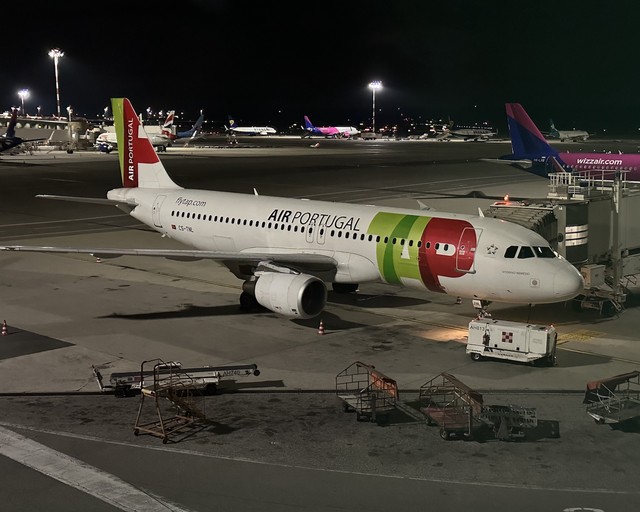
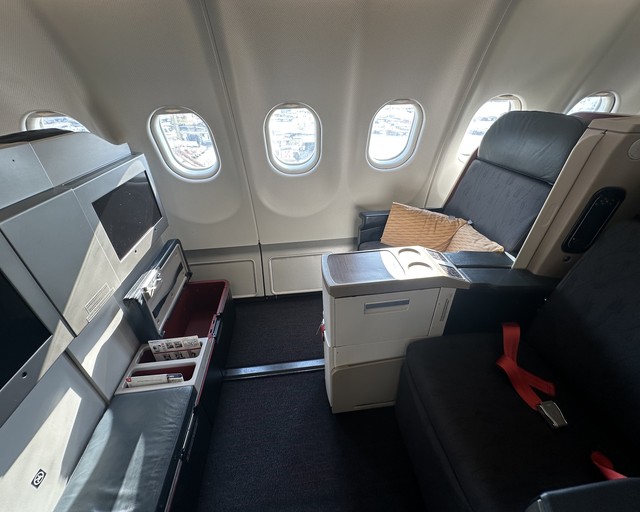
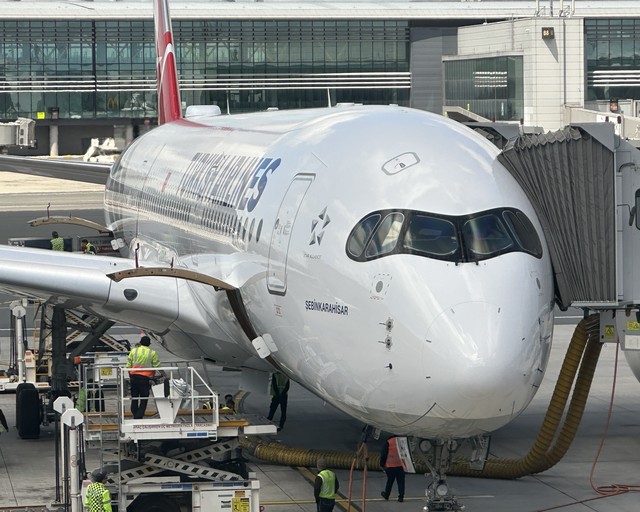
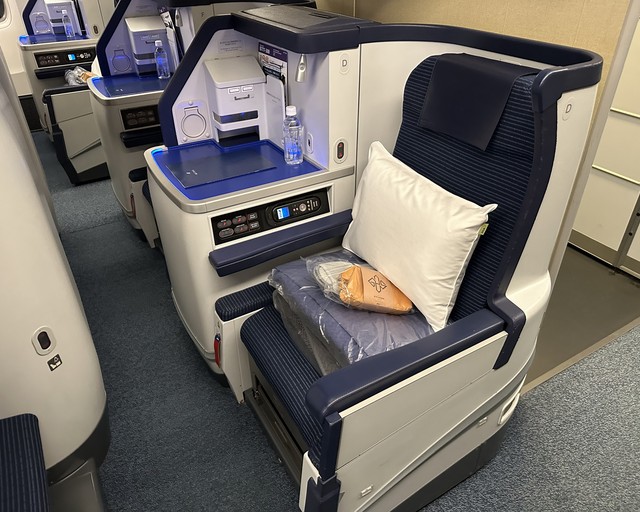
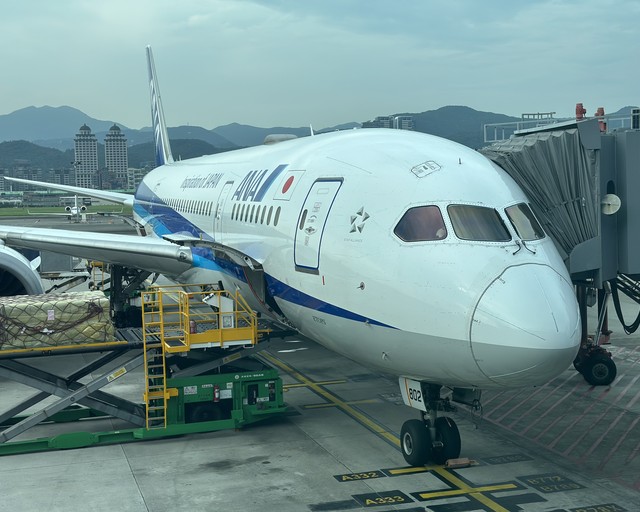

Well hello there! Here I was thinking you were on a new trip to Japan and then I realised it was on a 735...RIP little 737-500, it was such a cute 737.
On my recent trip I didn't get a chance to take any domestic flights as the JR Pass covered everywhere I needed to go, but definitely looking forward to trying some domestic flights the next time as I want to venture further out than Honshu.
Service on both ANA and JAL domestic is pretty basic in Y, but seems to be very efficient and certainly more pleasant and friendly than similar domestic hops within the US. I generally found travel to/from and within Japan to be much less stressful than in the US due in large part to the politeness and efficiency of staff in airports and train stations. Well, except for rush-hour at Shibuya JR station...that's just pure madness because of the sheer number of people.
Arigato Gozaimashita!
Hi Kevin, thanks for stopping by! Not yet back to Japan, but now that restrictions are pretty much gone, just a matter of time. The Super Dolphins oozed nostalgia, they will be missed along with that fleet of 737-400s JTA operated.
Japanese domestic flights are pretty bare bones and really only useful for intra-island hops where trains become impractical. Their only novelty is usually the airports with their observation decks and quirky signage.